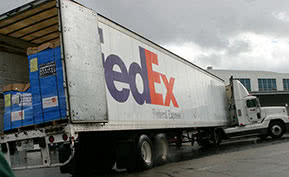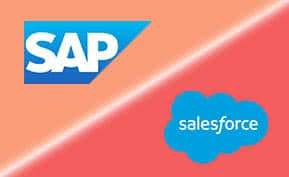Synovus Turns to Aplicor for CRM

“Our due diligence revealed that the Aplicor product had enough functionality to automate our relatively complex sales and marketing processes, at a price point that was reasonable for us.”
— Joe Majestic, chief technical officer, Synovus
CRM in Action: Synovus
The best way to illustrate how CRM can best address mid-market needs is to examine, in detail, a mid-market firm that’s using CRM successfully.
For this purpose, we’ve selected Synovus, a multi-service holding company headquartered in Georgia, which uses Aplicor to handle its sales and marketing processes. Synovus, which delivers banking, investment and asset management services through a network of banks and offices in the southeastern U.S., controls a little over $30 billion in assets. At first glance, that might not seem like a “mid-market” amount of money until one compares those assets with those of, say, Bank of America Corp., whose assets exceed $1.4 trillion.
As is typical for a mid-market firm in an industry where large industries dominate, Synovus is the antithesis of its larger competitors. Bank of America and its ilk are highly centralized, with worldwide branches that are as cookie-cutter as a Starbucks franchise. By contrast, Synovus consists of 43 separately branded banking institutions that operate autonomously within their respective communities through approximately 325 branch offices.
This decentralized concept allows Synovus’s banks to continue to position themselves as locally-deployed, thus offering customers the responsiveness that comes with local decision-making. At the same time, being part of a larger organization allows those autonomous banks to offer a wide array of financial products that otherwise would only be available from a multi-billion dollar holding company. “We’re trying to achieve the best of both worlds,” says Joe Majestic, the chief technical officer for Synovus’s Financial Management Services division.
Synovus is thus pursuing the classic mid-market strategy of offering services that are simultaneously complex (multiple financial services) and unique (delivering those services in a decentralized fashion). In doing so, however, Synovus faces some additional challenges. The banking industry has recently been subject to disruptive technology (such as Internet banking) that has damaged overall net margins. The overall decline of profitability in the banking industry as a whole forces all banks, regional and international, to focus not just on growing their customer base but on selling existing customers additional products and services.
To accomplish this, Synovus launched a new group, called Financial Management Services (FMS), which was mandated to offer specialized services, like trust management and insurance, that were outside the purview of most regional banks. This attempt to capture additional “wallet share” added an additional layer of complexity atop what was already a complex and unique go-to-market strategy.
In addition to getting 43 banks (and 43 sets of executives) to work together, Synovus now needed to coordinate the sales activities of FMS with sales activities of the various banks. For example, to be certain that the banks would send customers to FMS to handle trust accounts, Synovus implemented a compensation scheme where the bank receives ten percent of the fees derived from that account as long as its on the books. This means that FMS needed to treat an institution (as opposed to an individual) as a compensated sales rep – the sort of weird idea that would be difficult to implement using run-of-the-mill broad-based CRM software.
As one would expect, Synovus had demanding requirements when it came to selecting a CRM solution to automate and improve the performance of an admittedly complex sales environment. To ensure that all the different parts of the company would perform smoothly and profitably, Synovus wanted to achieve a holistic, centralized view of its customers throughout its highly decentralized organization. Company executives also wanted automated workflow processing, extensive account reporting and analysis, as well as ongoing and accurate information about customers, markets and the company’s overall sales performance. “Essentially we wanted to make everything work together more quickly and more smoothly,” says Majestic.
To make matters even more challenging, Synovus needed to build this unique CRM capability atop a highly heterogeneous computing environment comprised of all the various systems that had been previously installed inside the banks that Synovus acquired. To bring a CRM system live, Synovus would need to convert data from many disparate systems into a single CRM application, and then supply both online and offline processing to local PC’s and desktops. In addition, the CRM application needed to integrate with several outsourced mainframe systems that provided corporate-wide banking functionality, like check processing.
When Synovus looked for a CRM vendor, they quickly discovered that most software providers were either focused on small business or on large enterprises. However, they were able to find at least one vendor that was focused on the mid-market and seemed to understand their problem.
“We did an RFP process and got bids from the usual suspects but we were attracted to what Aplicor had to offer,” says Majestic, “Our due diligence revealed that the Aplicor product had enough functionality to automate our relatively complex sales and marketing processes, at a price point that was reasonable for us.”
Rather than trying to reinvent the proverbial wheel and retool the entire computing infrastructure (the approach that Siebel Systems wanted Synovus to take), going with a mid-market CRM vendor allowed Synovus to focus its limited IT resources on the automating those portions of Synovus’s business that were unique to Synovus – the company’s sales and marketing.
Synovus used CRM to build better synergy between FMS and the banks, as well as between the various banks in the corporate family. For example, using the data from the banking records, sales reps for the FMS can now see a holistic view of a customer or prospect, and then use whatever contacts that have already been established to open doors into the account. Thus, if one of the banks is lending money to a commercial customer, the lending office not only provides the FMS with detailed knowledge of the customer relationship, but can actually provide an in-person introduction to the FMS rep on the next sales call.
The CRM system also allows Synovus to offer additional services to existing end user customers. For example, Synovus has done interest rate swaps with some of its larger customers, thereby providing them a lower rate on the money they’ve borrowed. Similarly, the small accounts unit in Synovous’s trust department has used the information in the CRM database to consolidate trust accounts, thereby lowering administrative overhead. “The CRM system not only enables us to do the typical CRM stuff, like cross-selling, but it also helps us keep track of customers who might otherwise fall through the cracks,” says Majestic, “We even have an early-warning system where events trigger specific sales activities.” For example, if the commercial lender rep discovers that a customer is about sell a business, the CRM system cues the Synovus’s insurance sales reps to make a sales call.
This is not to say that the implementation was a walk in the park. Because there were so many disparate systems involved, “the biggest milestone was just getting the data right,” according to Majestic. The challenge here was creating a workable MCIF (Marketing Customer Information File) for each customer, even though some customers had their business account at one bank and their personal accounts at another. Resolving these data integrity issues was partly a manual process, but fortunately Aplicor supplied Synovus with some algorithms that helped identify and data problems and suggest fixes.
The positive impact of the CRM system has been significant, according to Majestic. The company has been able to generate more revenue per depositor than before because Synovus can offer its customers the kind of services typically available only in a gigantic financial institution, while still maintaining the local decision making. “From a speed to decision point of view, we can move much faster that a traditional bank,” says Majestic, “Our decentralized approach has given us a unique competitive advantage that leverages our strengths as a major regional bank.”
Perhaps the best measurement of the success of CRM at Synovus is the way that the local banks have embraced it. Because the banks are run as autonomous entities, Synovus’s top management didn’t want to force them to use the system. A heavy-handed approach proved unnecessary, though, according to Majestic. “Once we made people aware of the capability, it grew by word of mouth,” he says, “We started with several of the larger institutions as pilots and. once the word was out about the demonstrable successes, we had no problem signing other institutions onto the program.”
Synovus’s experience with Aplicor strongly suggests that the CRM needs of the mid-market can be adequately met by a CRM application that’s targeted specifically for the mid-market. CRM systems devised for large enterprises, while comprehensive, are too expensive and complicated for the mid-market. CRM system devised for the broad base of small businesses, while inexpensive, lack the functionality required to address the unique and complex aspects of mid-market sales and marketing processes.
About the Author:
Geoffrey James is the author of the award-winning management book Business Wisdom of the Electronic Elite (Random House) and has had 25 years experience in software sales and marketing. In addition to writing feature articles for publications ranging from Wired to Men’s Health, James has written extensively on the subject of CRM for SellingPower magazine.
[Photo courtesy of fianancesonline.]





